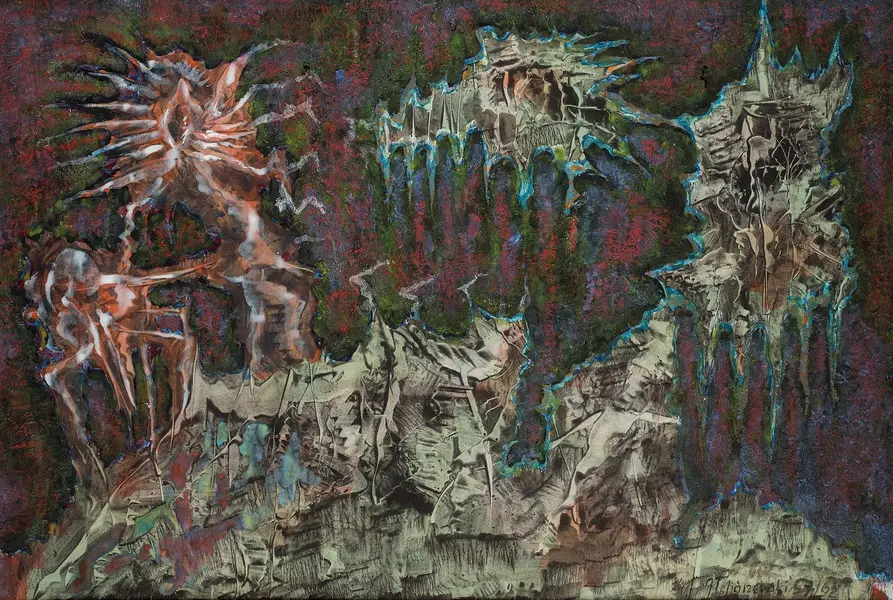


Lithography is a graphic technique classified as flat printing. The same term is used for the print made using this method. The duplicated drawing is made on a lithographic stone, as are prints of the artwork.
History of lithography
Lithography as a technique was invented in the late 18th century by Alois Senefeldr, a German amateur printmaker. Initially, it was intended for creating musical notations and maps. The first lithographic workshop in Poland was established in 1818 in Warsaw. Thanks to this technique other graphic forms such as offset printing or photolithography were developed.
To create a lithograph, the surface of a lithographic stone is ground and then a drawing is applied to it using a greasy lithographic crayon, paint or ink. The next step is to wipe the stone with an acidic solution that makes the areas hydrophilic – they do not absorb the printing ink that is applied to the areas covered by the drawing. The printing ink is applied with a roller or pad. The print is created in a lithographic press when the ink is applied through paper pressed against a lithographic stone.
Foreign artists who used this technique included Alphonse Mucha, Henri de Toulouse-Lautrec, Henri Matisse, Edvard Munch, Marc Chagall and Pablo Picasso. In Poland, lithographs were made by Stanisław Wyspiański, Leon Wyczółkowski.